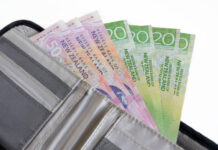Markets
Yesterday’s ECB meeting minutes showed a very lengthy discussion on dotting the i’s and crossing the t’s about the formulation of the bank’s new interest rate forward guidance. The debate on PEPP and quantitative easing in general (under APP) was limited and there were no real hints on its near-term future. That differed from the Fed. According to Kansas City Fed governor George, it is time to begin adjusting accommodation given the strong economy. She cited delta as a risk but that should not delay the process. George sees “good arguments” for faster tapering than last time. Her comments were followed by Bullard from the St. Louis Fed. He voiced similar views, adding that they are getting more inflation than expected. The Fed should get the tapering started to finish it by the end of 2022Q1 to provide optionality with respect to raising policy rates. This brings us straight to this week’s main event: the Jackson Hole Symposium. It has served as a forum to announce or at least lay the groundwork for a policy shift in the past. The highly-anticipated reunion was turned into a virtual one last-minute amid the coronavirus (deltavariant) raging in the US. It immediately highlights the uncertain environment the Fed has to operate in as it seeks to gradually withdraw unprecedented monetary policy support. We admit that it is by far the biggest risk for chair Powell to kick the can further down the road. However, as one of our favorite FT writers put it this morning: “Clock’s ticking, Jay”. Inflation is on the rise and there are few signs of it to ease anytime soon. According to the last Fed meeting minutes, a majority even agrees enough progress has been made towards the symmetric 2% goal. There was more disagreement on the labour market but the very strong July labour report surely convinced a few more doubters. Furthermore, alternative indicators such as the unemployment to job openings ratio are just shy of reaching the spectacular levels seen in 2018/2019. QE has done more than its part in supporting demand. It is time for the Fed and Powell to acknowledge this and at least lay the foundation for tapering when he speeches at 4pm today. The actual timetable is probably not going to be announced before September 22. The $120bn question then is: how much is discounted by markets? We assume investors are firmly aware of the normalization sequence: first tapering, then hiking. With a first rate hike priced in at the turn of the year, implicitly some form of tapering is thus expected. We see this for example in US real rates (10y), which rebounded 20 bps from the historical lows (-1.20%) since August. Should Powell go ahead and offer a blueprint, there’s more scope for (real) yields to rise further as part of the market still needs to be convinced. Nominal yields might be countered by topping/falling inflation expectations in such a case however. The dollar has been frontrunning as well, perhaps even more than US yields did. EUR/USD tested key support in the 1.17 area last week in the wake of the Fed minutes before a technical rebound kicked in. That zone could quickly come under renewed pressure if our base scenario unfolds. A sustained break lower paves the way towards 1.1603/12.
News headlines
According to the National Bureau of Statistics, profit growth at Chinese industrial firms decelerated further in July for the fifth consecutive month to 16.4% Y/Y from 20.0% Y/Y in the previous month. YTD profits still rose 57.3% Y/Y. Profits are said to be pressured by sporadic coronavirus cases and floods, while elevated commodity prices are also mentioned as squeezing margins. On the positive side, profit growth in the mining and materials industry improved and this was also the case for pharmaceutical manufacturing. The slowdown in China activity raised expectations for additional policy support. In a statement on Thursday, the People’s Bank of China said it will use monetary tools including the reserve ratio. Additional support might take the form of a (targeted) reduction in the RRR. The yuan this morning is losing marginal ground with USD/CNY trading near 6.4840.
Retail sales in Australia in July declined 2.7%, a faster pace than expected due to the lockdowns to address the new wave of the coronavirus. Sales in June also declined -1.8%, indicating that the economy might contract substantially in Q3 especially as a further decline might occur this month. The Aussie dollar is trading little changed at AUD/USD 0.7240.












